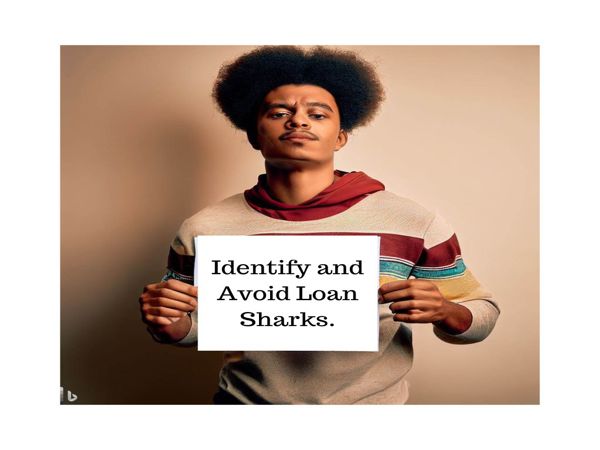In today’s digital world, building a strong personal brand is essential for setting yourself apart, building connections, and even creating income opportunities. This article breaks down the process into three key areas: establishing your personal brand, engaging audiences effectively, and creating partnerships with brands that align with your values.
1. Define Your Personal Brand
Your personal brand is essentially your reputation and how others perceive you. It should reflect your unique values, skills, and passions.
Step-by-Step Solution:
- Identify Your Niche and Values: Think about what you want to be known for. Choose a specific area that aligns with your skills and interests, such as fitness, finance, or tech.
- Create Your Value Proposition: What makes you unique? What value can you bring to your audience that they can’t find elsewhere? This value should guide all your content and interactions.
- Develop Your Brand Message: Create a clear, concise message that summarizes who you are and what you stand for. This can be in the form of a slogan or tagline, and it should be visible across all your platforms.
Example:
If you’re building a brand in fitness, your niche could focus on helping people develop workout routines for a busy lifestyle. Your value proposition might be "Get fit without spending hours in the gym," and your message could be "Fitness made simple for busy people."
2. Create Consistent Content and Visual Identity
To establish a strong personal brand, it’s crucial to be recognizable across platforms. Consistency helps build trust and makes it easier for people to identify your content.
Step-by-Step Solution:
- Create a Content Strategy: Define what type of content you’ll create, how often you’ll post, and the platforms you’ll use. Tailor your content to each platform, using professional photos and posts on LinkedIn and visual, engaging posts on Instagram.
- Choose a Color Scheme and Logo: Use a consistent color palette, font, and logo (if applicable) to create a cohesive look for your brand.
- Develop Your Tone and Voice: Whether you want to be seen as friendly, authoritative, or humorous, your tone and voice should be consistent in all your communications.
Example:
A personal finance influencer might post quick, actionable finance tips on Instagram, write in-depth guides on a blog, and share longer posts about personal finance trends on LinkedIn. Their color scheme might use calming blues and greens to build a trustworthy image.
3. Engage Your Audience
Engagement is key to building a loyal community around your personal brand. Engaging audiences is more than just posting content—it’s about creating a dialogue and responding to their needs.
Step-by-Step Solution:
- Encourage Interaction: Ask questions, host Q&A sessions, and create polls to encourage your audience to engage with your content.
- Respond to Comments and Messages: Show your audience you value their thoughts by responding to their comments and messages. This builds trust and loyalty.
- Use Storytelling: Share personal stories to help your audience connect with you on an emotional level. This can include challenges you’ve faced, successes, or life lessons.
Example:
A travel blogger could share behind-the-scenes stories of their travels, respond to travel-related questions, and even ask their audience for travel tips. By involving their audience in the journey, they create a sense of community.
4. Grow Your Following and Build Relationships
Your personal brand’s growth depends on creating connections with your followers and forming relationships within your industry.
Step-by-Step Solution:
- Network Within Your Niche: Engage with other influencers, bloggers, or professionals in your field by commenting on their posts and sharing their content.
- Use Hashtags and Tagging: Utilize relevant hashtags to reach a broader audience. Tagging brands and other influencers in your niche can help your posts get noticed.
- Collaborate with Other Influencers: Partnerships with others in your niche can introduce your brand to new audiences.
Example:
A fashion influencer could collaborate with other fashion bloggers to create a “lookbook” together. By sharing content on each other’s platforms, both influencers reach each other’s audiences.
5. Seek Partnerships with Brands
Once you have an engaged audience, you can start partnering with brands that align with your values. Brand partnerships are a fantastic way to monetize your personal brand.
Step-by-Step Solution:
- Create a Media Kit: A media kit should include details about your audience demographics, engagement statistics, and examples of your work. This makes it easier for brands to see the value of working with you.
- Reach Out to Brands Directly: Don’t be afraid to initiate contact with brands you admire. Send a concise, personalized pitch that explains how your personal brand aligns with theirs.
- Be Selective About Partnerships: Only partner with brands that align with your values and would genuinely benefit your audience. This authenticity is key to building long-term trust with your followers.
Example:
If you’re a health and wellness influencer, partnering with a brand that sells health supplements could be a good fit. But it’s best to turn down partnerships with unrelated brands, such as fashion or tech, as this could dilute your brand’s credibility.
6. Leverage Multiple Income Streams
In addition to brand partnerships, there are several ways to earn income from your personal brand.
Ways to Monetize Your Brand:
- Affiliate Marketing: Earn a commission by promoting products from brands you trust.
- Digital Products: Create and sell digital products like e-books, online courses, or exclusive guides.
- Paid Memberships: Offer exclusive content or consultations for a monthly fee through platforms like Patreon or Ko-fi.
- Sponsored Content: Brands may pay you to feature their products or services in your content.
Example:
A lifestyle influencer might create a subscription-based newsletter offering exclusive advice, earning regular income while providing value to loyal followers.
7. Use Analytics to Refine Your Strategy
Data can tell you what’s working and what isn’t. Track your metrics across social media and website analytics to understand which content types and strategies resonate most with your audience.
Step-by-Step Solution:
- Monitor Engagement Metrics: Keep track of likes, comments, shares, and saves. High engagement signals valuable content.
- Track Follower Growth: Measure how many new followers you gain and try to identify patterns.
- Adjust Content Based on Insights: If one type of post consistently performs better, consider incorporating more of that style into your content strategy.
Conclusion
Building a personal brand, engaging your audience, and partnering with brands requires patience, consistency, and a well-thought-out strategy. By defining your personal brand, creating quality content, fostering genuine relationships, and exploring partnerships, you can establish yourself as an influencer who brings value to both your audience and the brands you work with.

.jpg)








